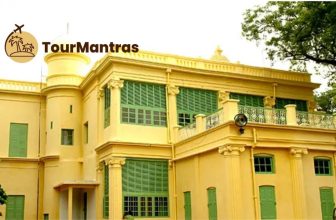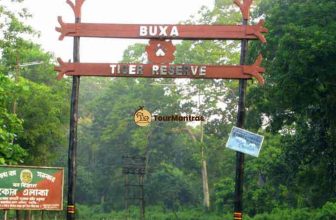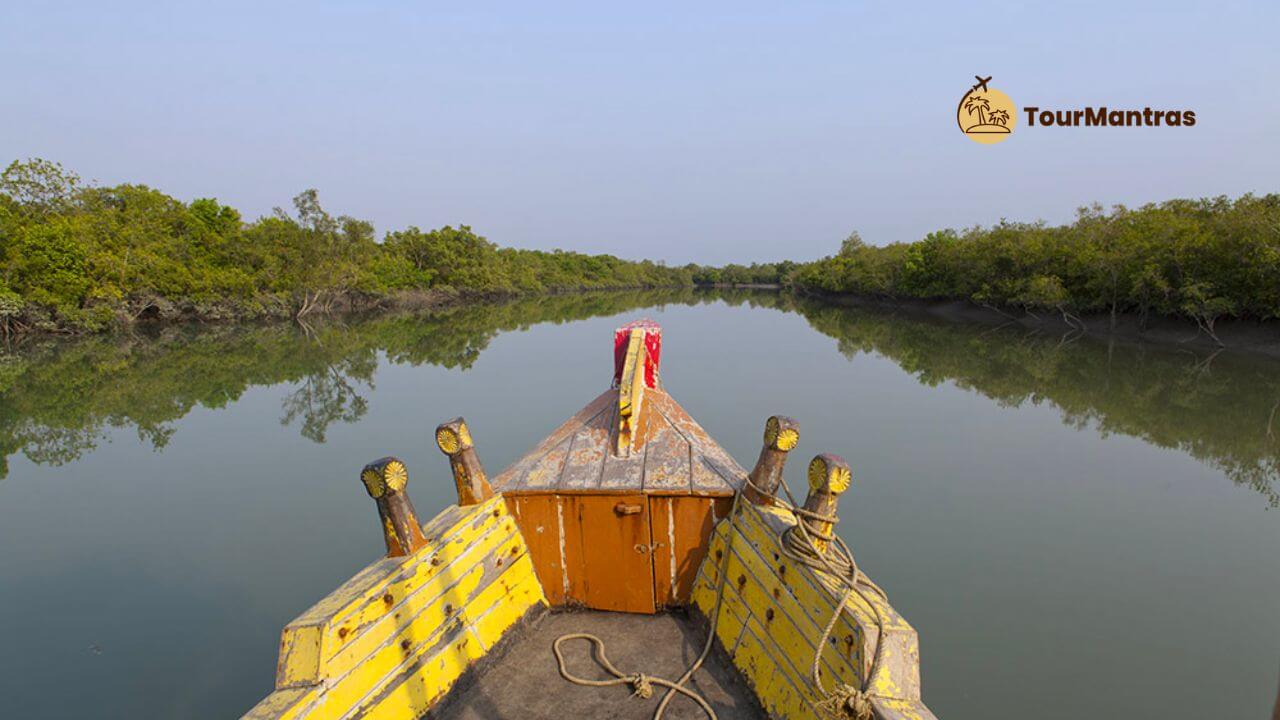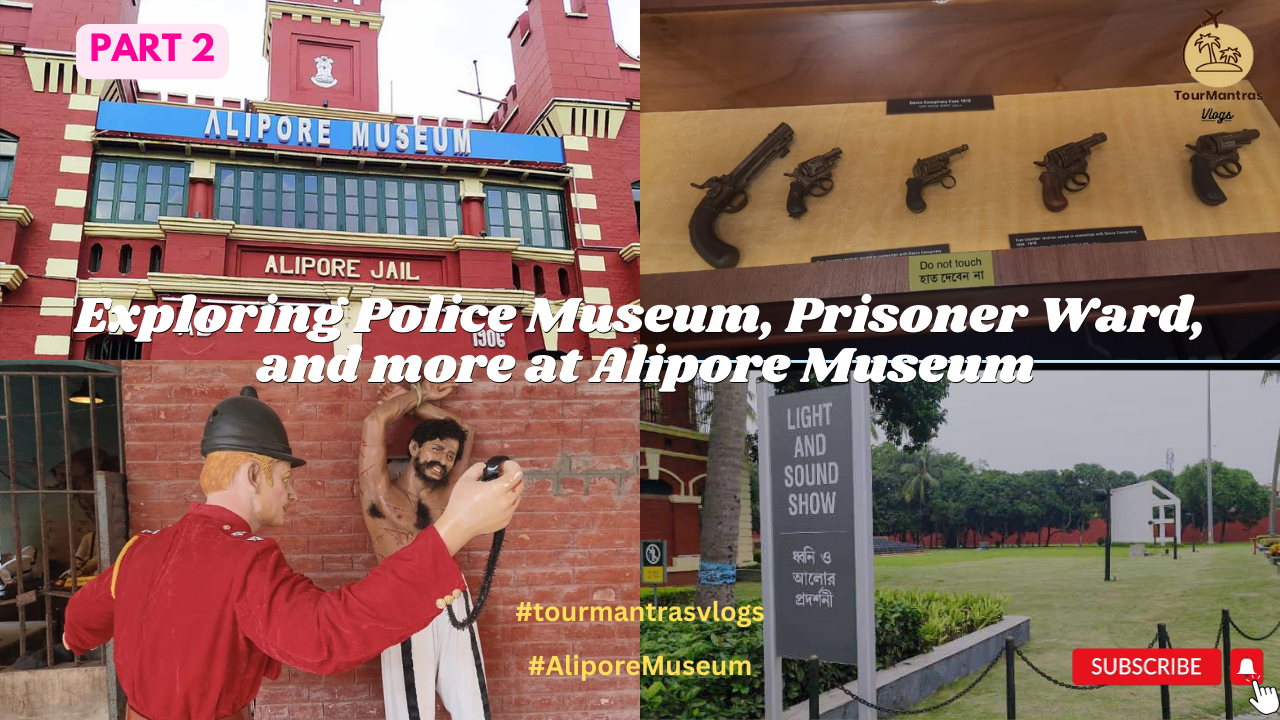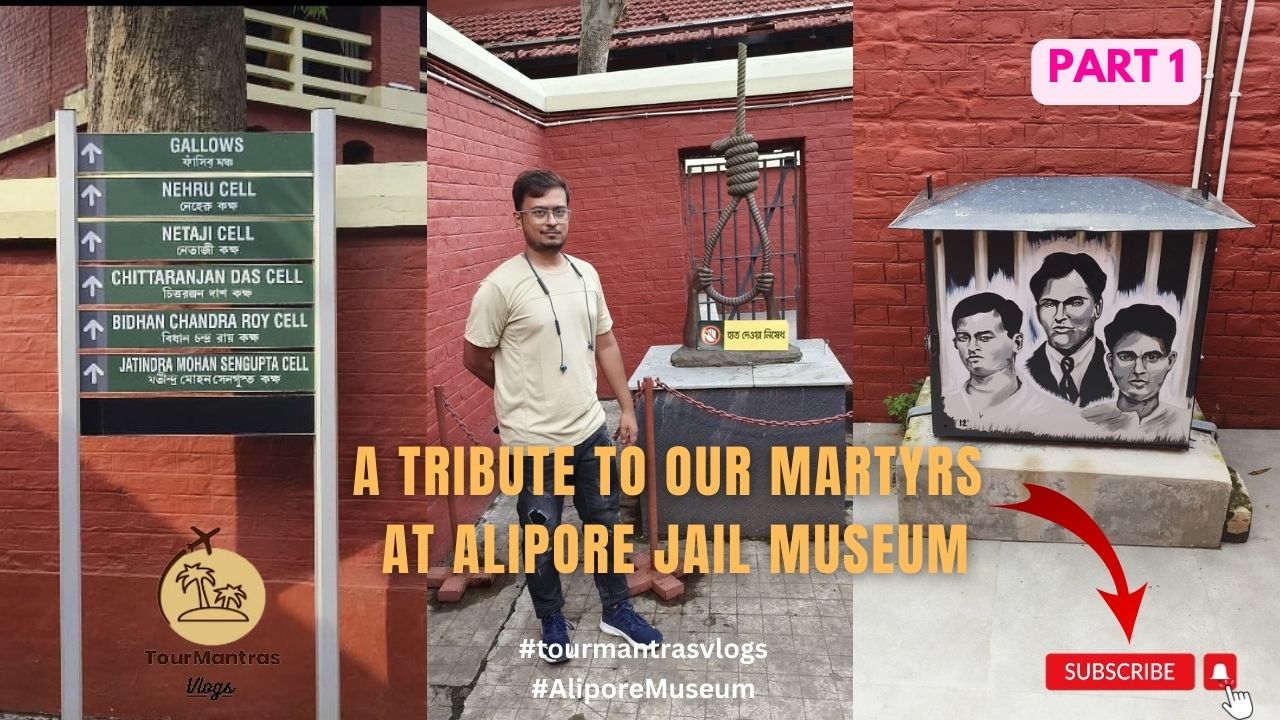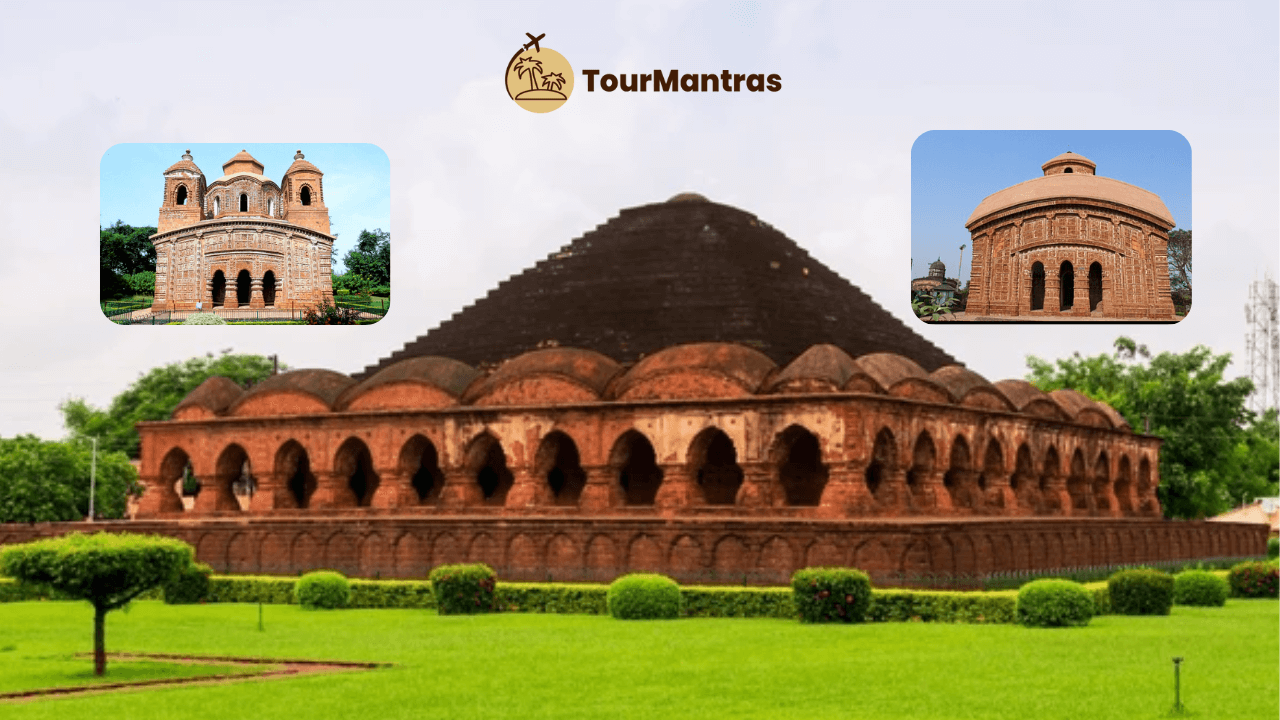
Just about 132 kilometres from the bustling heart of Kolkata lies a town known for its heritage—Bishnupur, the cultural crown of Bankura district in West Bengal. Known as the temple town, Bishnupur is popular for lavish heritage, proud culture, brilliant architecture, and tales of terracotta.
As travel lovers, we are thrilled to share our detailed travel guide for Bishnupur, situated in the delightful state of West Bengal, India. Come along with us on this adventure as we explore the best tourist places in Bishnupur, main attractions, how to reach Bishnupur, approximate expenditure, and much more.
Table of Contents
Travel to Bishnupur – Vacation in Bishnupur
Bishnupur has an intriguing history that goes back to the 17th century when it was the capital of the Malla dynasty. It is well-known for its terracotta temples and Baluchari sarees. This terracotta temple stands prominently, showcasing the architectural brilliance of that period.
Bishnupur developed a distinctive architectural style and is perhaps home to the most remarkable and detailed terracotta artistry in Eastern India, which has withstood the ravages of time.
Additionally, Bishnupur is recognised for its traditional handloom sarees, pottery, artefacts, and terracotta jewellery, as well as the School of Hindustani Music that flourished under royal patronage, along with the Bishnupur School of Painting. Henceforth, Bishnupur is undoubtedly one best offbeat places to visit near Kolkata.
Vacation in Bishnupur: The City of Temples
Bishnupur, the temple town in West Bengal’s Bankura district, extends a warm welcome with its rich heritage, proud culture, impressive architecture, and stories of terracotta. The place boasts several ASI-protected temples, which are worth exploring.
1) Jor Bungla Temple
2) Jora Mandir
3) Kala Chand Temple
4) Lalji Temple
5) Madan‑Gopal Temple
6) Madan‑Mohan Temple
7) Maleswar (Malleswara) Temple
8) Muralimohan Temple
9) Nanda Lal Temple
10) Patpur Temple
11) Radhabinode (Radha Vinod) Temple
12) Radhagobinda (Radha Govinda) Temple
13) Radhamadhab (Radha Madhav) Temple (Privately owned, but ASI‑listed)
14) Radhashyam (Radha Shyam) Temple (Privately owned, but ASI‑listed)
15) Rasmancha
16) Shyam Rai (Shyam Ray) Temple (Privately owned, but ASI‑listed)
Among so many temples, here is detailed information about some of the notable temples:
1) Madanmohan Temple: When visiting Bishnupur, the pinnacled ‘Bishnu’ temple is an essential destination. Undoubtedly, this temple represents one of the primary architectural forms that embodies the exquisite terracotta artistry within its structure. Established by Malla Raja Durjan Singh Dev in 1694 in honour of Lord Madan Mohan, this temple remains active to this day.
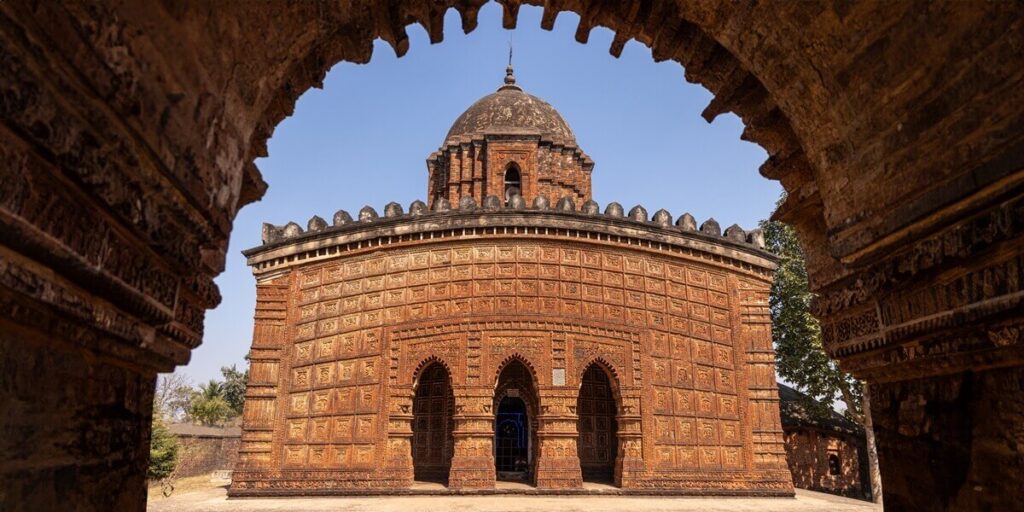
Situated to the North of the ancient city, the Madanmohan Temple reflects the devotion of the Malla rulers, who adhered to ‘Vaishnavite’ Hinduism, recognising Lord Vishnu as the supreme deity. Consequently, they named their capital Bishnupur, or Vishnupur. The Madan Mohan Temple is dedicated to Radha and Krishna, the 8th Avatar of Vishnu, with Sri Krishna serving as the protective deity of the Malla dynasty.
2) Rasmancha: Established by King Hambir in 1600 AD, Rasmancha is the oldest brick temple in Bishnupur. This majestic temple is architecturally distinctive and unmatched, being one of its kind in Bengal and the entire nation. Rasmancha stands on a laterite base and has a single chamber, hut-shaped turrets, and a tall tower.
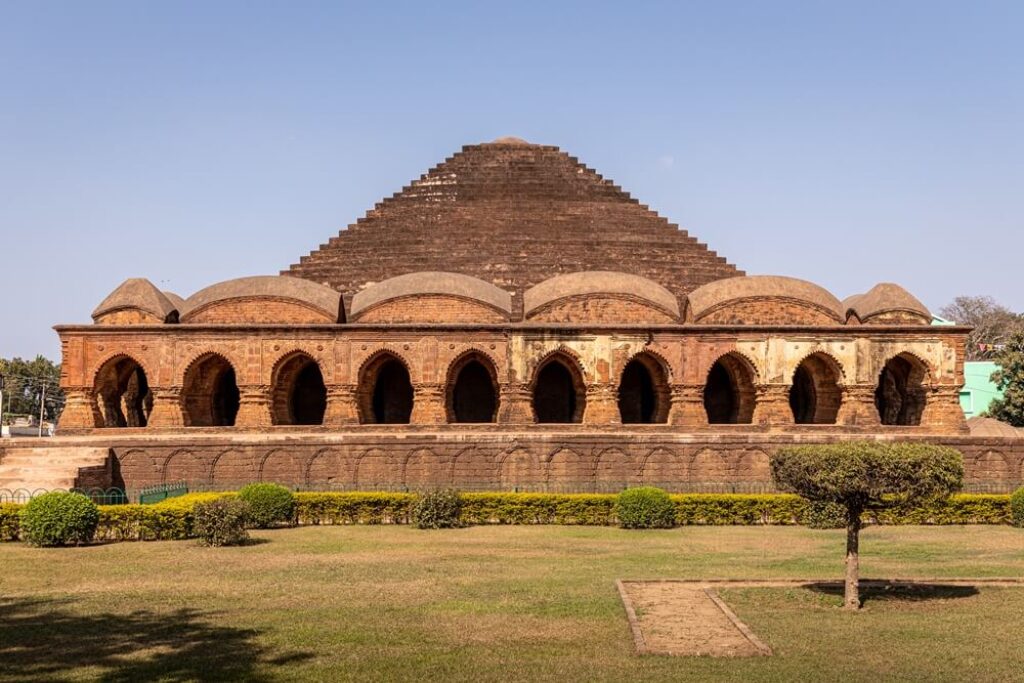
3) Shyam Rai Temple / Pancha Chura Temple / Pancha Ratna Temple: The Shyamarai Temple, also known as the Pancharatna Temple, is located to the north of Bishnupur village and is renowned for its exquisite architectural beauty.
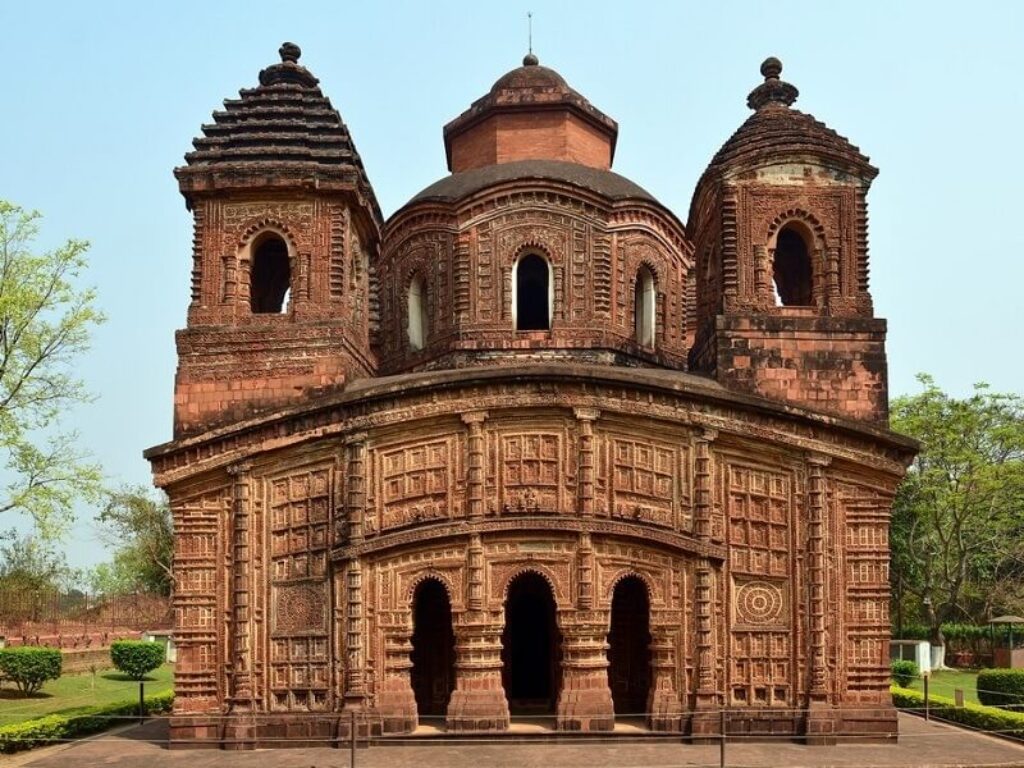
Standing on a low square plinth, this Pancharatna brick temple was constructed by the Malla King Raghunath Singha in AD 1643 and is distinguished by its intricate terracotta ornamentations.
The square-shaped temple showcases both its interior and exterior, adorned with beautiful terracotta tiles. Various images and carvings on the temple walls depict the narratives of Lord Krishna and the Gopis. Furthermore, it includes scenes from the Ramayana, Mahabharata, and other Puranic stories.
4) Chhinnamasta Temple: One of the most renowned and vibrant deities in Bishnupur is Chinnamasta Mata. The temple, which is roughly a century old, has been newly renovated. The statue of Chinnamasta is the main highlight of the temple, portraying the goddess as she beheads herself with her sword, with three streams of blood gushing from her neck.
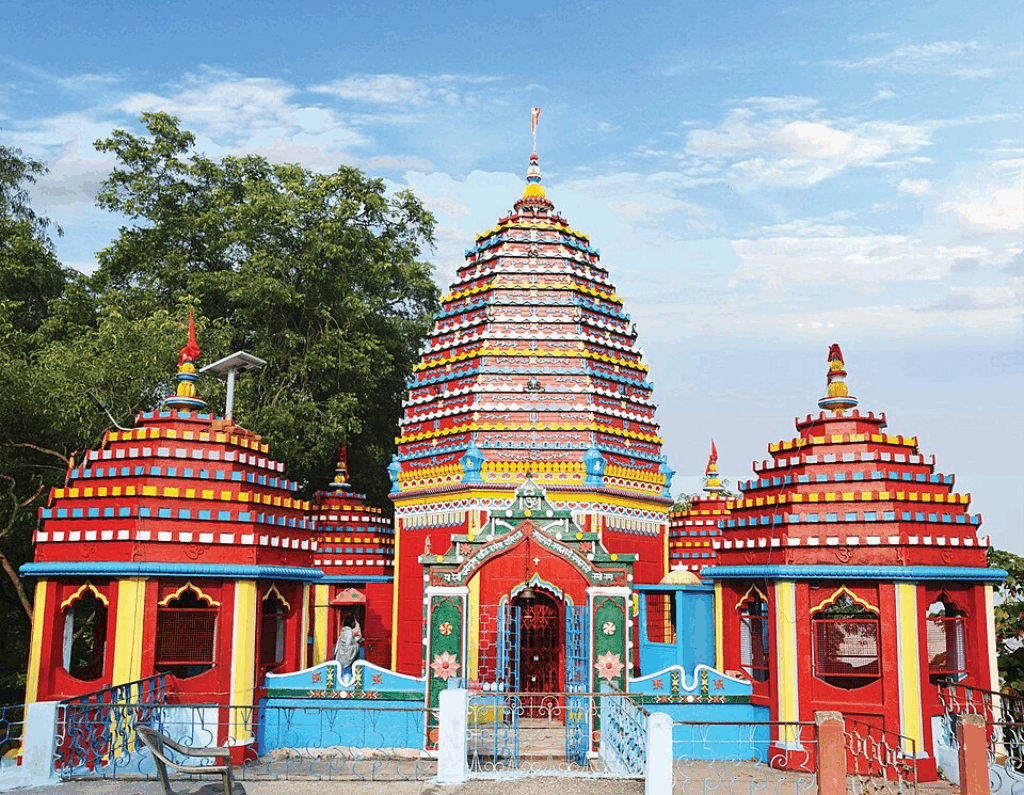
This temple is situated on the path to the Jor-Mandir group of Temples, via the Dalmadal Cannon/Gun. Hundreds of devotees consistently make contributions and engage in worship of this divine entity. Chinnamasta gleams like a lightning bolt from the Sun, embodying the rare bravery required to make the ultimate sacrifice.
5) Jor Bangla Temple / Kesta-Rai Temple: The temple is known as Kesta Rai Temple officially, but it is more commonly recognised for its design, which is characteristic of the Jorbangla style. Constructed by Raghunath Singha, a Malla king, this temple dates back to 1655.
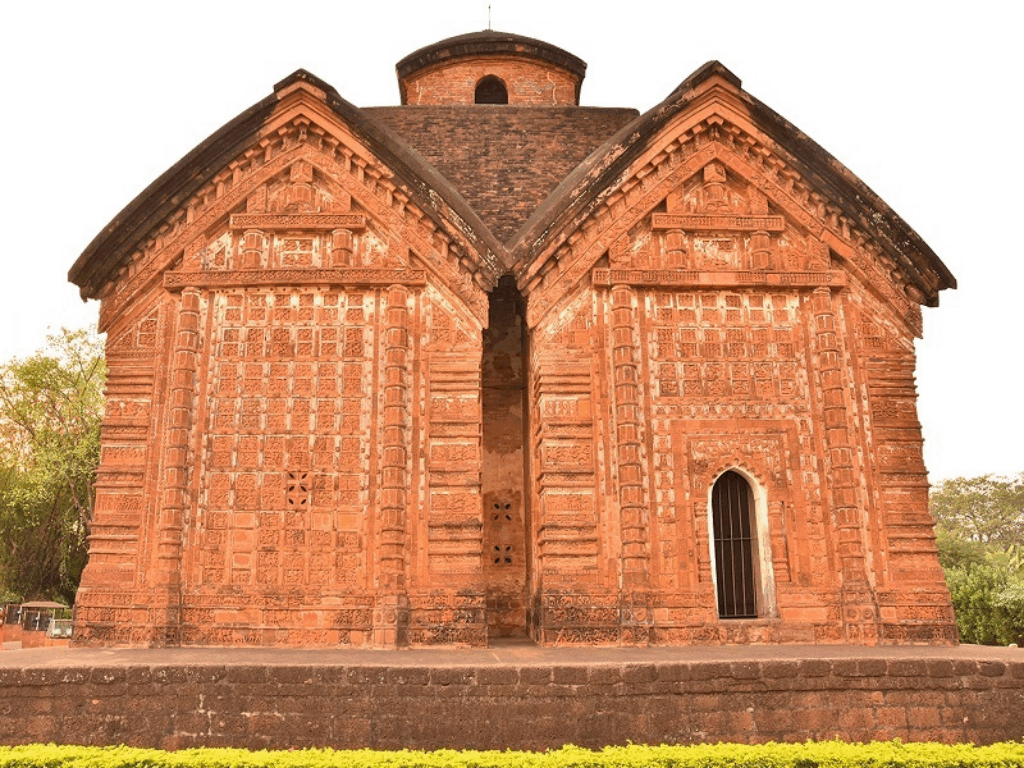
Facing south, the temple is built on a square platform that takes the shape of two traditional Bengal huts. The two slopes meet in the middle and are crowned with a Char Chala Shikara.
Exquisite terracotta work and panels adorn the outer wall, inner wall, and roof. These terracotta panels depict various scenes from Krishna Leela and elements of social life, among other subjects.
6) Mrinmoyee Temple: The Mrinmoyee temple, recognised as the oldest temple in Bishnupur, was founded by King Jagat Malla in 997 AD. Here, Goddess Durga is revered as Maa Mrinmoyee. Despite undergoing reconstruction, the idol crafted from Ganga clay has remained unchanged.
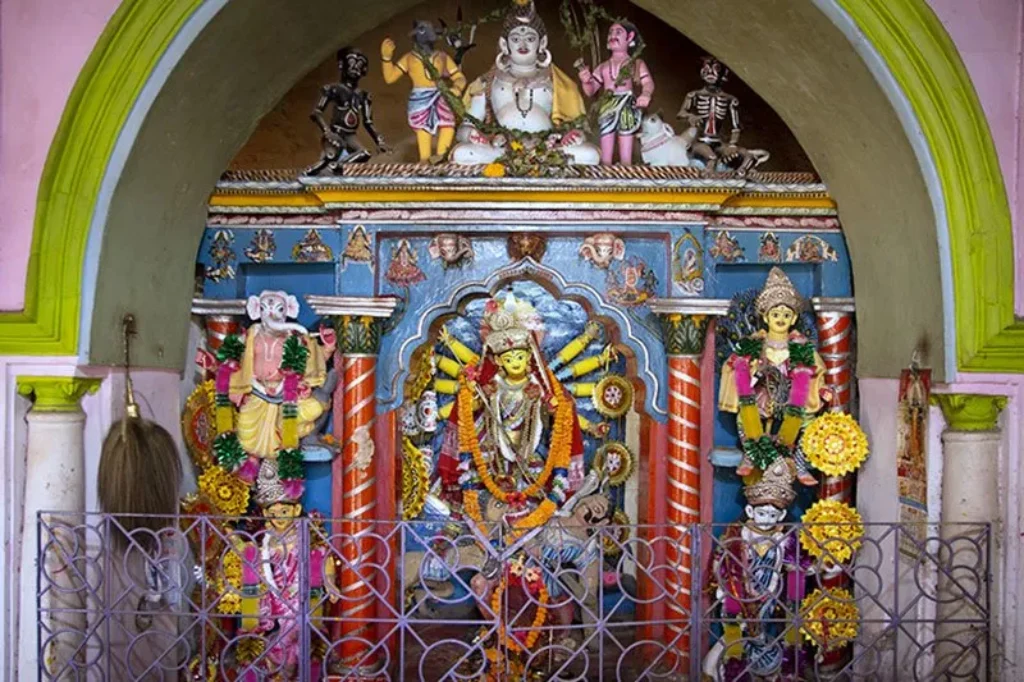
Immerse yourself in the oldest Durga Puja celebration in Bengal, which has a rich history spanning 1021 years, and experience a unique sense of religious warmth during the festivities.
7) Radhashyam Temple: Situated adjacent to the renowned Mrinmayee Mata Temple in Bishnupur, this Ekaratna temple, constructed from intricately carved stones, features a square curved roof design topped with a single tower and a fluted dome. This terracotta temple, oriented to the south, is set within an expansive courtyard surrounded by a tall boundary wall. It serves as an active place of worship, housing the images of Lord Krishna and Radha in its sanctum.
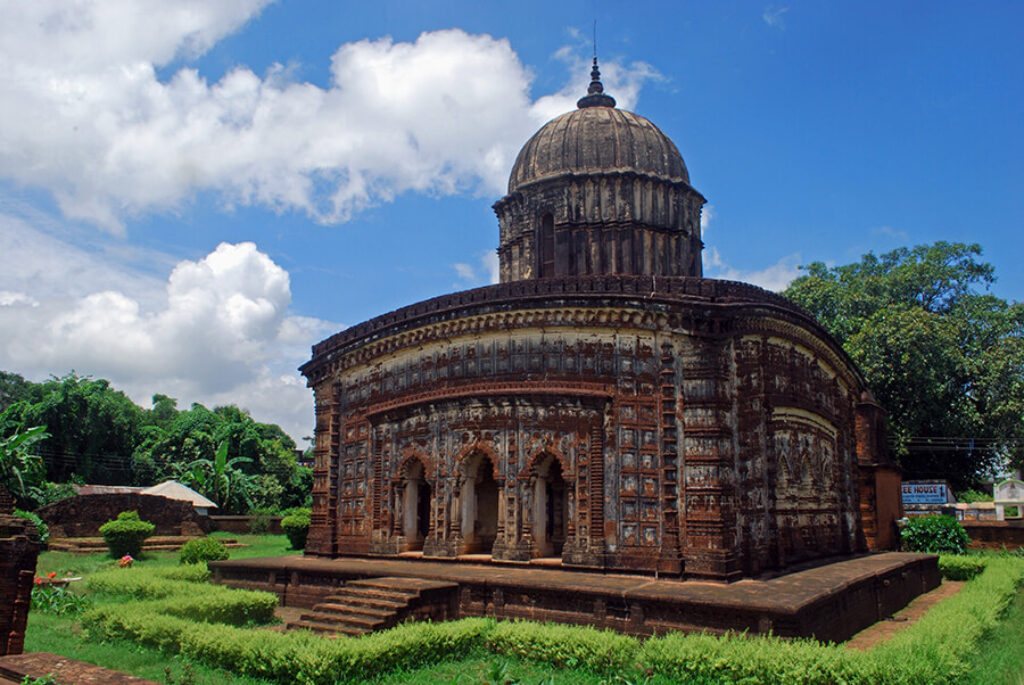
8) Jor Mandir: The Jorbangla temple was founded by Malla king Raghunath Singh in 1655. This temple stands out as one of the remarkable examples of terracotta art in West Bengal and features a distinctive architectural design. It is referred to as “Jorbangla” due to its unique “Do Chala” shape. The structure includes a roof with double-sided curved thatch, known as the porch and shrine, which are interconnected.
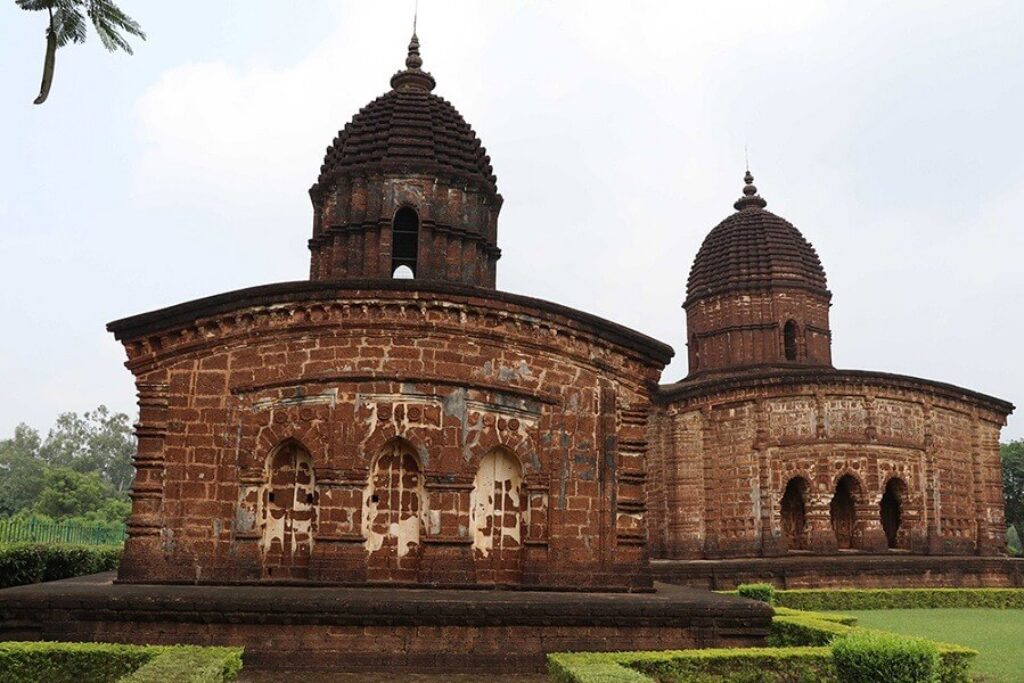
Visitors can admire the intricate terracotta sculptures that depict various scenes from the Mahabharata, Ramayana, and the childhood of Krishna on its walls. The terracotta panels vividly illustrate epic narratives such as ‘Bhisma’s Sarasajya’, ‘Marriage of Ram-Sita’, ‘Maa Parbati with her two sons’, ‘Balgopal’s activities’, ‘the tale of Laxman and Surpanakha’, among others.
9) Lalji Temple: This temple is made from laterite stones and showcases the Ek-ratna style. It stands on a large square platform with a subtly curved roof. There are triple-arched gateways on three of its sides. Each corner of the temple is embellished with five rows of horizontal double lines.
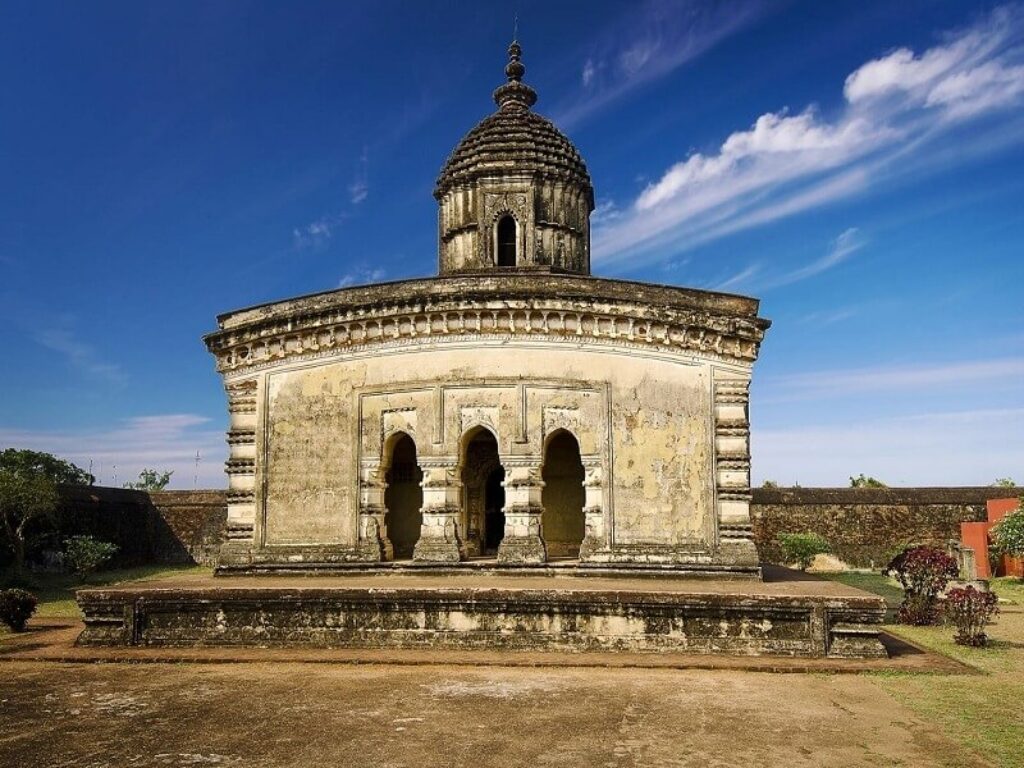
The rest of the temples also showcase ancient architecture and terracotta works. You can visit and explore them all if your vacation in Bishnupur is more than three days. For a single day travel to Bishnupur, the above-mentioned temples are a must to visit.
Note: You have to buy a ticket that costs ₹25 to visit the temples. This one-time ticket allows you to visit all the temples hassle-free.
Other than temples, you can visit:
1) Dalmadal Canon: The Malla rulers constructed this wrought iron cannon. This cannon is situated close to the Chinomasta temple and is important to the residents of Bishnupur and Bengal. Later on, this cannon was fired during the Durga Puja celebrations.
One of the most remarkable features of this cannon is that it is made entirely of iron materials, and it has remained free from rust despite being exposed to sunlight and rain since it was first made.
2) Garh Darja: Garh Darwaja is a terracotta entrance located in Bishnupur, a site renowned for its terracotta craftsmanship established during the Malla Kings’ reign. This entrance is also referred to as the ‘Chota Patthar Darwaja’ or ‘Small Gateway’ of Bishnupur.
Garh Darwaja features an arched terracotta design with a simple exterior. Not far from this entrance is another, larger gateway known as the ‘Bara Patthar Darwaja’ or ‘Main Gateway’ of Bishnupur.
3) Bishnupur Archaeological Museum / Acharya Jogesh Chandra Purakriti Bhaban: Acharya Yogesh Chandra Purakirti Bhawan is a museum located in Bishnupur, and it is a must-visit for those passionate about archaeology, art, and history. Here, you can view around 100 terracotta sculptures from the 10th to 12th centuries, close to 5000 manuscripts, tools from the Mesolithic and Palaeolithic eras, metal jewellery, diverse folk arts, photographs, unique textile specimens, and many other historical items.
Travel to Bishnupur – Major Attractions in Bishnupur
Apart from tourist places in Bishnupur, there are some famous things you can explore during your vacation in Bishnupur. Here is what you can explore
1) Baluchari Waving Centre & Baluchari Sarees: Bishnupur is well-known for its Baluchari silk sarees. These unique silk sarees feature elaborate weaving designs in the pallu and borders. Often rich in hues, these sarees exhibit a natural sheen and glossy finish. They are produced from pure or genuine silk.
2) Dokra Metal Castling: The tribal community of Bishnupur, referred to as ‘Dokra Damar’, engages in a unique art form known as ‘Dokra Metal Casting’. This crafting method primarily utilises clay, which is subsequently coated with wax. After the wax application, a layer of clay paste is added to the models.
This technique has resulted in the creation of various objects, including religious symbols, jewellery, cutlery, and bells. Many women opt to wear Dokra jewellery, and this art form has become a lasting heritage of Bishnupur.
3) Terracotta Work: Using burnt clay bricks, the architects of Bengal developed a new form of craft, commonly referred to as ‘Terracotta’. In the seventeenth century, the art of terracotta reached its zenith. One can admire the exquisite terracotta art in numerous temples located in Bishnupur, including Rasmancha, Jor Bangla temple, Shyam Rai temple, and Madan Mohan temple.
In addition to temples, a variety of potteries are crafted from terracotta. The traditional method of producing terracotta potteries involves the use of finely refined clay to shape the pottery appropriately.
4) Poramatir Haat: The phrase ‘Pora Matir Haat’ literally means a weekly market for selling burned clay items. This ‘haat’ takes place every Saturday & Sunday afternoon at the ‘Jor Mandir’ grounds.
Besides acquiring terracotta and other handmade crafts, visitors can enjoy performances of tusu, bhadu, baul, kirtan, chau, ran-pa, etc. The bright hues of the ‘Rarh-Bengal’ culture converge here, offering visual delight and mental relaxation at the ‘Pora Matir Haat’.
5) Horses of Panchmura: I suggest taking a half-day journey to Panchmura, famous for its Bankura Terracotta Horses. If you’re planning to purchase terracotta souvenirs from Bishnupur, believe me, a visit to this artisans’ village will explain why.
In Panchmura, the prices are roughly one-fourth of those in Bishnupur. Also, you can experience the artisans in action as they craft stunning terracotta horses, elephants, cups, saucers, and more.
With so many places to explore and things to experience, Bishnupur is without any doubt one of the best tourist spots in West Bengal.
Travel to Bishnupur – Hotels & Restaurants
Bishnupur offers a variety of hotels and resorts; alternatively, you can choose to stay at hotels in Joypur Forest. Joypur Forest is approximately 15 km from Bishnupur, making it easily accessible for a day trip to explore the temples.
Travel to Bishnupur – How to Reach Bishnupur
A well-connected transportation network makes it easy for anyone to reach Bishnupur. If you are thinking about ‘how do I get to Bishnupur from Kolkata?’, here’s a complete guide on how to travel to Bishnupur.
From Kolkata and other Cities of West Bengal
It has excellent road connectivity with Kolkata and nearby towns such as Asansol, Durgapur, Burdwan, Panagarh, and other state regions.
By Bus:
Bishnupur is well-connected to nearby cities and towns through state highways. If you are coming from Kolkata or any other cities in West Bengal, Calcutta State Transport Corporation (CSTC) and South Bengal State Transport Corporation (SBSTC) buses regularly connect Bishnupur. It will take four to five hours. It costs nearly ₹100 to ₹200, depending on the distance.
Also, you can reach Bishnupur by your private car. Here, the cost and the duration will depend on you, how many stops you will take for refreshment and other needs. It will take nearly four and a half hours to reach Bishnupur through Joypur Forest.
By Train:
If you are comfortable with a train journey, there are several trains available to reach Bishnupur. You can either catch early morning trains and start your vacation in Bishnupur, or you can reach one day before at night and stay in a hotel, and start fresh on the next day. You can check the trains on the “Where is my Train” app.
If you are coming from the Kolkata side, catch the Howrah–Midnapore Local to reach Santragachi Junction before the departure of the Rupasi Bangla Express. It costs ₹5 to ₹10. To explore the Tourist Places in Bishnupur, catch the early morning train, Rupasi Bangla Express, from Santragachi Junction at 6:28 am. It will reach you, Bishnupur, in 3 hours (if running on time) and ticket costs ₹128 to ₹431, depending on the booking type.
Suppose you are coming from Asansol, you can catch the Haldia SF Express from Asansol Junction at 5:40 am. You will reach Bishnupur in 2 hours and 18 minutes. The cost of the ticket varies from ₹100 to ₹500 depending on the booking type.
From Anywhere in India (By Flight / Train / Bus to Kolkata)
If you are coming from any other part of India, reach Kolkata (major city of WB) first and follow the above-mentioned ways to reach Bishnupur.
The cost of flights to Kolkata from various cities across India can differ greatly depending on the distance and the timing of the booking. Typically, domestic flight fares can range from ₹3,000 to ₹10,000 ($40.54 – $135.15) for a one-way ticket or even higher.
Whereas, the cost of train and bus travel to Kolkata will vary based on the distance and the selected mode of transportation. Typically, train fares can range from ₹500 to ₹3,000 (USD 6.75 – USD 40.54), whereas bus fares may vary from ₹800 to ₹2,500 ($10.80 – $33.76) for a one-way trip.
Note: The price can fluctuate considerably based on the initial location and the selected mode of transportation.
From Abroad (By Flight to Kolkata):
The cost of flights from different countries to Kolkata is influenced by the distance and the airline chosen. Typically, the price of international flight tickets to Kolkata can vary from $300 to $1,500 (one-way) or even higher.
Note: The price can fluctuate considerably based on the country of origin, the airline, and the timing of the booking.
Best Time to Travel to Bishnupur
Bishnupur is a destination that can be explored year-round; however, the ideal period to appreciate its charm is in the winter months, specifically from October to February. During this season, the weather is enjoyable, with temperatures fluctuating between 15°C and 25°C. The clear skies and refreshing breeze provide an excellent atmosphere for discovering the town’s architectural wonders and engaging with its rich cultural heritage.
It is crucial to be aware that Bishnupur endures hot and humid summers, with temperatures exceeding 40°C. Should you choose to visit during this season, it is advisable to bring sunscreen, hats, and ensure you remain well-hydrated.
The Bishnupur temples are open to visitors from 8 am until sunset. The Bishnupur mela is a remarkable festival celebrated annually in the Bengali month of Poush, which corresponds to the end of December or the beginning of January in the Gregorian calendar.
Travel to Bishnupur – Average Travel Cost
Travel to Bishnupur: Starting from your hometown to Bishnupur, the travelling cost is variable upon your mode of travel. It varies from ₹500 – ₹15000 ($5.80 – $174) per person for an Indian citizen, and it goes higher for a foreigner.
Food: Coming to food, you can enjoy budget meals at local eateries for around ₹200 – ₹300 ($2.5 – $3.5) per person per day. Whereas in Mid-range restaurants, it costs around ₹500 – ₹800 ($6.75 – $10.80) per person per day.
Lodging: Budget guesthouses may cost ₹500 – ₹2000 ($5.80 – $27.00), and premium hotels may cost INR ₹3000 – ₹11,000 ($35.00 – $128.00) per night.
Sightseeing: After reaching Bishnupur, sightseeing in Bishnupur via toto-rikshaw nearly ₹400 to ₹500, rest how much you can bargain is your profit. However, entrance fees to temples, museums and other tourist places are generally affordable, around ₹50 – ₹100 (USD 0.68 – USD 1.35) per person.
Note: The prices are variable. We have shared the approximate figures.
Wrapping up on Travel to Bishnupur
Bishnupur, a captivating sanctuary of art, culture, and spirituality, provides a charming retreat from the hustle and bustle of city life. Featuring its tranquil environment, vast landscapes, rich heritage, and delicious cuisine, Bishnupur is among the best tourist spots in West Bengal. We’re sure that this travel guide to visit the Tourist Places in Bishnupur will help you plan your next trip to this beautiful place!
FAQ on Travel to Bishnupur
1) How many days are required to visit Bishnupur?
It totally depends on you. If you want to explore all the tourist places in Bishnupur, take a 7-day vacation in Bishnupur. However, you can end the trip by visiting the top places in Bishnupur in 2-3 days. So, it’s totally up to you.
2) Is Bishnupur worth visiting?
Yes, Bishnupur is a town of temples, famous for its vibrant cultural heritage, stunning architecture, and tranquil natural beauty.
3) What is the time of Poramatir Haat in Bishnupur?
Poramatir Haat is organised at Bishnupur on every Saturday and Sunday from 2:30 pm to 5:30 pm at Jor Mondir, adjacent field to attract the tourists.
4) What are the 7 Dams of Bishnupur?
The 7 historical dams (LAL, KALINDI, JAMUNA, SAM, GATAT, KRISHNA, POKA) or earthen dams are built by the Malla Rulers to protect their Fort from external threats.
5) What is Bishnupur famous for?
Bishnupur is famous for its terracotta temples and arts, rich heritage, cultural history, and Baluchari sarees.




